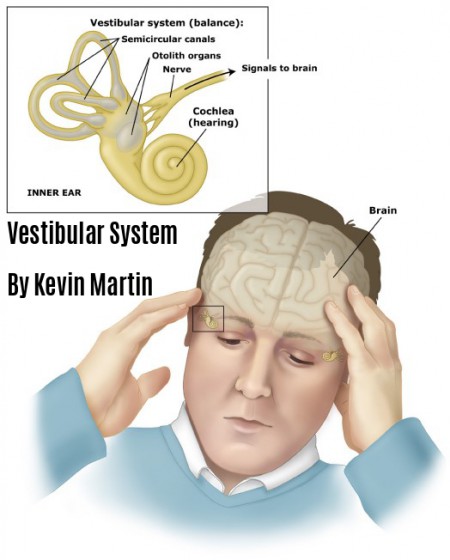Vestibular System

Do you ever hop out of bed in the morning and get the spins? Does turning your head or rolling over in bed cause you to feel off balance and being pulled in one direction? If so, you may be suffering from a common condition called Benign Paroxysmal Positional Vertigo (BPPV). According to recent studies, more than 2% of the population will suffer from this disorder at some point in their lives. Many Americans suffer through the symptoms not knowing that this condition is very treatable with just a few physical therapy sessions.
What exactly does our Vestibular System do and how does it relate to BPPV? BPPV is a condition that affects your vestibular system and contributes to sensations of instability, dizziness, and vertigo. Your vestibular is a sensory system located in your inner ear that provides you with information about your spatial orientation and helps you be able to balance. We rely on this system to do everything from skateboarding and playing basketball to basic things such as walking or controlling your balance when bending down.
BPPV leads to brief and often intense periods of vertigo where individuals feel like the room is spinning. Symptoms often occur when the patient changes positions such as bending down, rolling over in bed, or turning your head in certain directions. Normally, when you get out of bed in the morning your vestibular system is able to correctly tell your brain your new orientation in space by the way fluid moves through little structures in your inner ear called semicircular canals. However, if you are suffering from BPPV your orientation in space is temporarily altered when changing positions due to little calcium carbonate crystals getting loose and traveling to these semicircular canals. As a result, when your head changes positions gravity moves these “crystals” in the semicircular canals creating a false sense of excessive movement leading to a sensation of spinning.
How does Therapy Help? The crystals may end up in one of your 6 semicircular canals. A therapist that specializes in this vestibular therapy will be able to determine exactly which canal to treat. Most often, the therapist will use a technique called an Epley maneuver to remove the crystals. This involves going through a series of four position changes to flush out the crystals from a specific semicircular canal back into the utricle of the inner ear. Between 70-95% of patients experience permanent relief of symptoms after as few as 1-3 treatments. Individuals often make the mistake of self-treatment by looking up these exercises online to manage these symptoms. However, they may be exacerbating their problem by treating the wrong canal, causing their dizziness to worsen.
If you or a friend are experiencing vertigo contract your primary care physician today for a referral and take the next step toward finding relief with physical therapy.